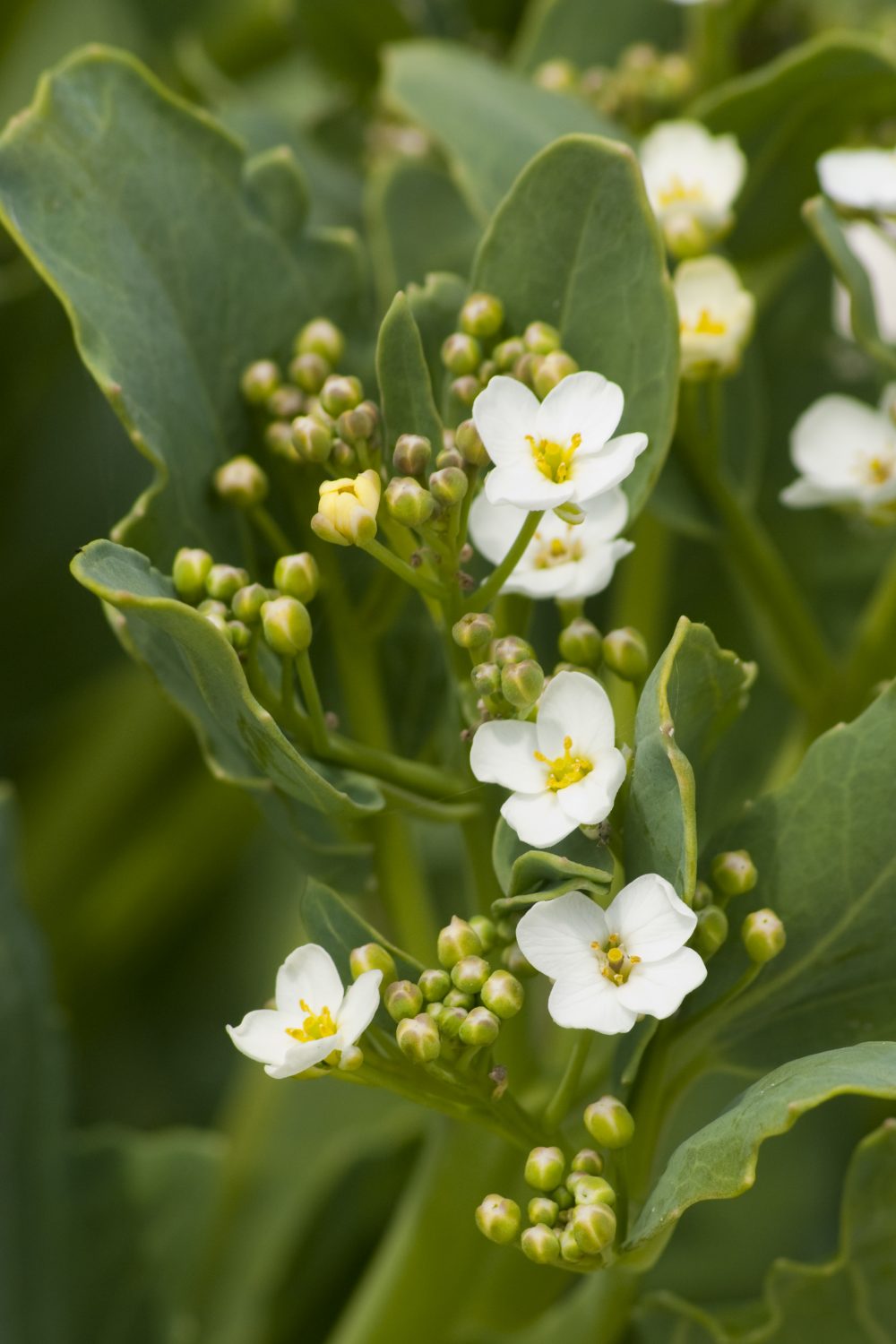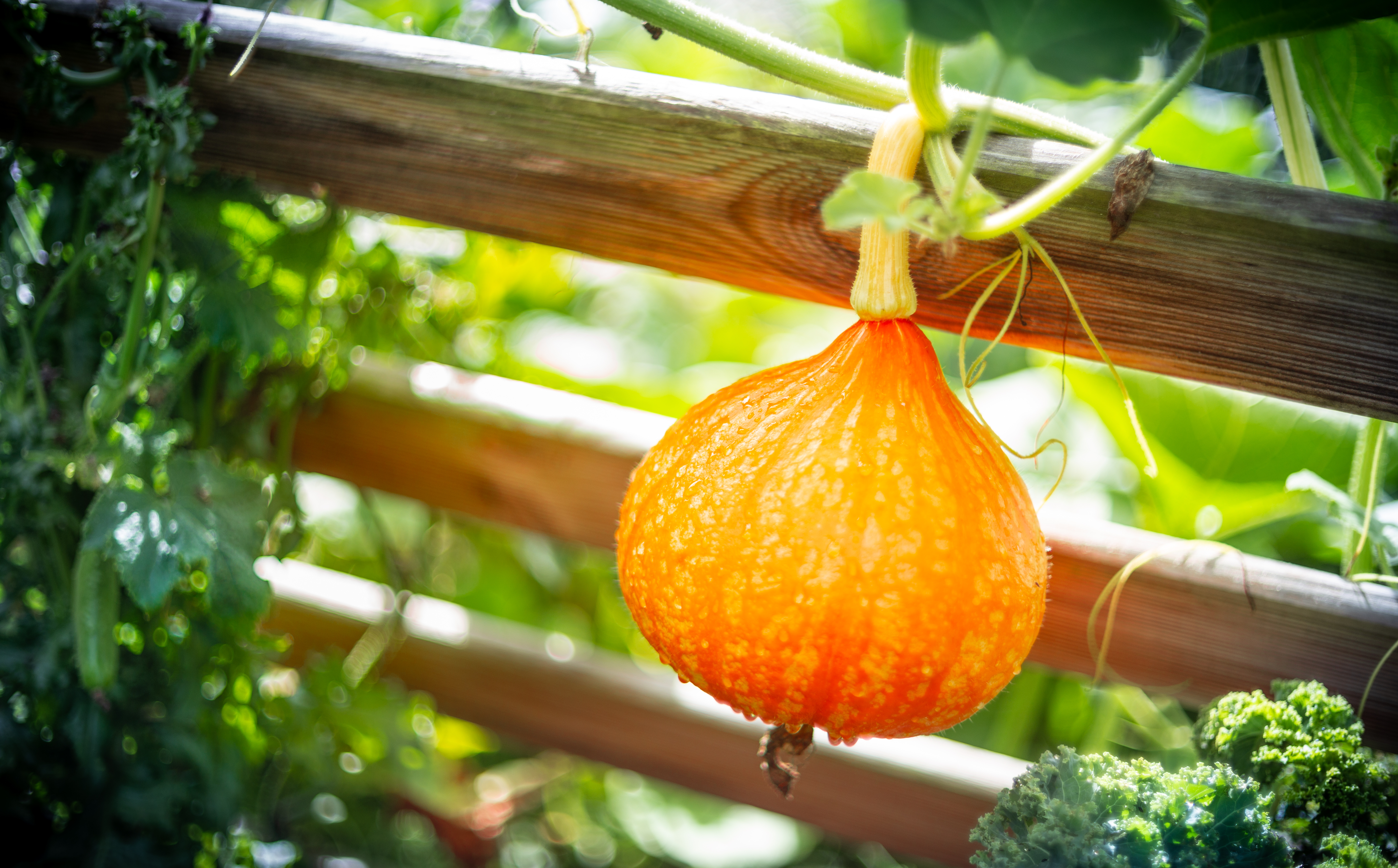Sue Whigham digs deep into the world of lesser-known fruit and veg
I’ve joined a waiting list for Apios americana (above) but it’ll be worth the wait and also gives us a chance to thoroughly prepare the ground and find some tall plant supports

Sea kale, Crambe maritima, (above) is a plant that you don’t have to live near the sea to grow
Kore Wild Fruit Nursery, Bridport House, Cilcennin, Lampeter, Ceredigion SA48 8RL.
Tel: 01570 470439
korewildfruitnursery.co.ukIncredible Vegetables, 24 Home Park, Ashburton, Devon, TQ13 7BE
Tel: 07765 665284
incrediblevegetables.co.ukChiltern Seeds,
Crowmarsh Battle Barns, 114 Preston Crowmarsh, Wallingford, OX10 6SL.
Tel: 01491 824675
chilternseeds.co.ukSue Whigham can be contacted on 07810 457948 for gardening advice and help in the sourcing and supply of interesting garden plants.
Well, I know we haven’t had much snow here in the south east but the low temperatures and icy winds haven’t really been conducive to getting out in the garden. I’ve discovered that the only thing for it is to wrap up well and get out there little and often. My dogs are completely confused by this erratic behaviour but it’s the only way that works for me. Today’s job has been to plant out a few hundred snowdrops ‘in the green’ before they dried out. Thankfully, they look better planted out in clumps rather than singly and I was buoyed by the Archers’ Omnibus babbling away in the background.
What I laughingly call my vegetable patch is still a bit of a mess but by the time that this issue comes out all should be well. We’ve started to clear it by tidying up the climbers on the trellis, the most vigorous of which is our boysenberry. This plant was bred in California in the 1920s by one Rudolph Boyson and is thought to be a cross between a blackberry and loganberry or a red raspberry but possibly all three. All we know is that it is wildly vigorous and the fruits large and delicious. It does rather fight back when you are trying to tie in new growth but it’s well worth the trouble. Its close neighbour was my Japanese wineberry, Rubus phoenicolasius, which scrambled around in a rather more controlled manner. I love it for its decorative red stems covered in hairs as well as its delicious little reddy-orange fruits. Alys Fowler describes them so well, to quote: ‘with a strong raspberry flavour that pops with a little sherbet’. I say ‘was’ because there is no sign of it and I wonder if we’ve lost it.
So putting my mind to both unusual and some perennial edibles, I think that this might be the year to be a bit more adventurous. However, it seems that everybody else has had the same idea and we might have to curb our enthusiasm a bit. I’m wondering whether the seeds of sea kale, Crambe maritima, might still be viable. I know that they should be sown fresh but these have been used as decoration since the end of last year. It’s worth a try as if they work this is a plant that you don’t have to live near the sea to grow, especially as they have three different harvests:
- Force the spring shoots by placing a rhubarb forcer (or bucket) over the plant for a while and then steam the tender shoots.
- Cook the young leave as you would a vegetable like kale.
- Steam the unopened floret or flower bud adding a lemon and tahini dressing.
I’ve scoured the internet for a groundnut plant, Apios americana, having read about its virtues and have now located a couple of plants on the Kore Wild Fruit Nursery website. I’ve joined a waiting list for these precious two but it’ll be worth the wait and also gives us a chance to thoroughly prepare the ground and find some tall plant supports. I think that the willow stems recently cut down might do the trick. And why grow Apios americana? Firstly as it is a legume its roots will add nitrogen to the soil and it also has the added bonus of clusters of lovely pink flowers, as well as strings of edible underground tubers. They are full of carbohydrates and high in protein and it seems are ideal for the vegetarians amongst us like our six year old granddaughter. Watch this space whilst we persuade her to try them later in the year. The idea is to slice the tubers and fry them, adding oregano and a little sea salt too. Harvest the tubers as the plants die back in autumn and store some of them in the same way you would dahlia tubers to plant out the following year.
Another vine with delicious early shoots is Caucasian spinach, Hablitzia tamnoides. Once you’ve harvested some of the early leaves, leave the rest to use as a substitute for spinach. This plant is happy in a damp, semi shaded spot and takes up little space as it has a vertical habit. Incredible Vegetables in Devon has this in their fascinating plant and seed list. Julien Skinner and Mandy Barber follow both organic and permaculture principles on their two sites down near Dartmoor. They have been trialling Apios americana. They grow plants to enrich soil eco systems and to store carbon from the atmosphere and also give talks at garden and permaculture festivals, so it’s well worth visiting their website to see where they’ll be next.
Actually their story is pretty inspirational as ten years ago their land was used purely for sheep grazing. They now have an acre of permaculture vegetables, meadows, a forest garden and a huge planting of native trees. And now with the amount of biodiversity they have created, many of their edibles are multi-purpose in that they have become sources of food for wildlife and pollinating insects. Check out their fab website for exciting plants, cuttings, seeds, bulbs and bulbils.
I see that they sell skirret, Sium sisarum, seeds as do the marvellous Chiltern Seeds in their Veg Book. I have to say that this vegetable looks very odd with its bundles of pale skinny roots. But as Chiltern Seeds say, it is very rarely mentioned or grown these days but what fun to have a go. It seems that skirret is native to China, but was known to the Romans, Emperor Tiberius in particular! You can either try it raw in salads, adding rocket too, or cook it with butter and garlic.
And whilst you are immersed in the Chiltern Seeds catalogue, check out Red Kuri or Red Onion Squash (Squash ‘Uchiki Kuri’) described as ‘little globes of orangeness’. How gorgeous. And along with its pear shaped, nutty flavoured fruits, it is a reliable and easy vegetable to grow. I can’t wait to give this one a go.

Check out Red Kuri (above) or Red Onion Squash (Squash ‘Uchiki Kuri’) described as ‘little globes of orangeness’. How gorgeous
istockphotocom/ weisschr / shurub / tilo
You may also like
In the Night Garden
Jo Arnell explains how to make the most of your outdoor space once darkness falls Some enchanted evening you may see me outside – mainly searching for slugs in the garden, because the cool hours of night are when they...
Contain your excitement
Jen Stuart-Smith discusses how to get creative with your pots and planters My love affair with plants started with houseplants when I was a child. As my bedroom windowsill overflowed – resulting, occasionally, in waking up with compost under my...
More than just a pretty face
Jen Stuart-Smith explores the multiple uses of some easy-to-grow garden favourites When you grow flowers for their beauty, shape and colour it can be easy to forget all the other qualities they have to offer. Some are edible, others provide...










